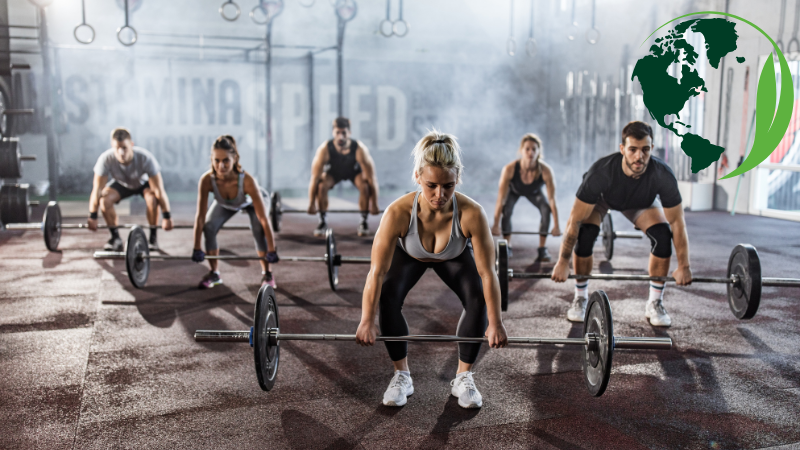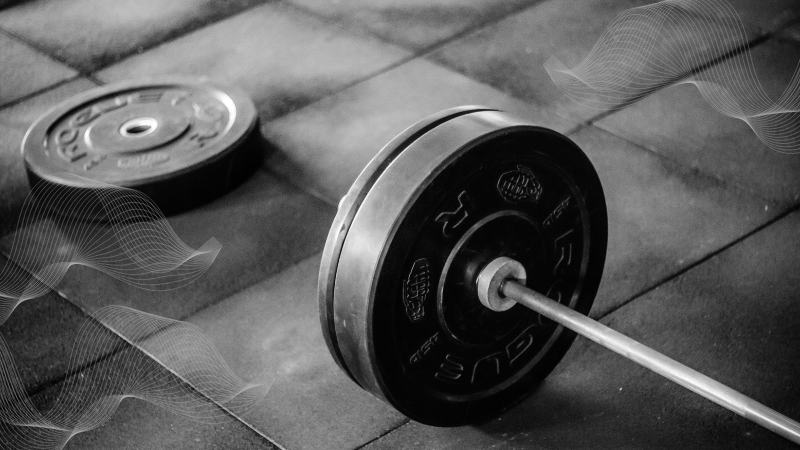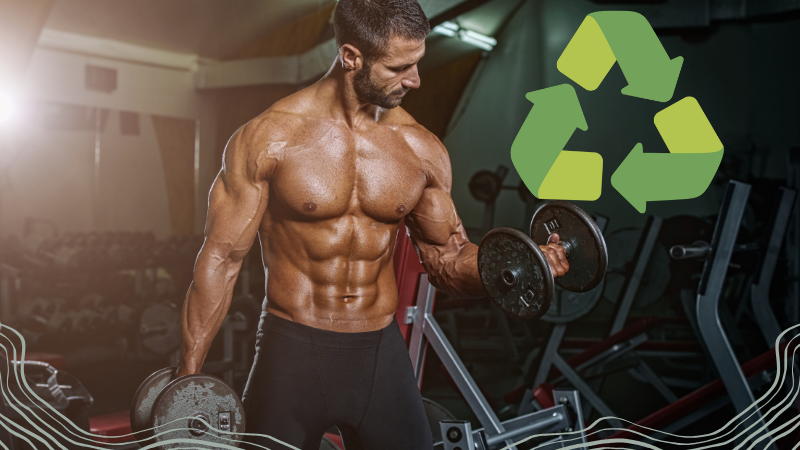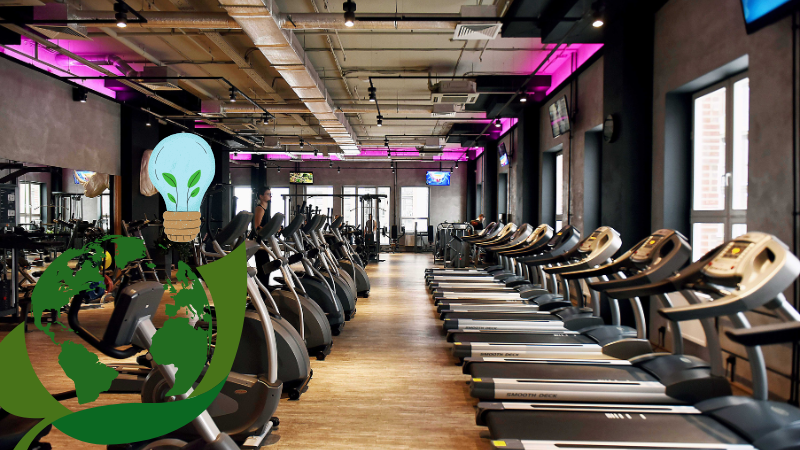Using pre-owned fitness equipment for your gym is definitely one of the best choices you could make.
Reuse is one of the simplest, most impactful ways to reduce waste and pollution. I’ve come to realize that running a gym with a sustainable approach isn’t as challenging as it may seem.
Let’s talk about why opting for pre-owned gym equipment is a choice that benefits not just our budgets but the world around us.
Table of Contents
ToggleWhy Sustainability in Gyms Matters

Gyms are not immune to waste; from packaging materials to single-use cleaning supplies, many aspects of gym life can have a significant carbon footprint.
Benefits
- Reduced Environmental Impact: Reusing equipment limits the need for manufacturing, which reduces emissions and conserves resources.
- Cost Savings: Let’s face it, running a gym isn’t cheap. Pre-owned equipment often costs a fraction of new gear.
- Appealing to Eco-Conscious Clients: People care about sustainability. A gym that supports these values attracts members who share the same goals.
Eco-friendly gyms benefit not only the environment but also your health. According to Stefanie Young, vice president of technical solutions at the U.S. Green Building Council, green gyms generally offer improved indoor air quality and rely on fewer toxic chemicals for cleaning.
“All of that affects how the user engages with the space, so it’s important not just from an environmental aspect, but when you add the COVID pandemic aspect, it’s even more important,” she said.
We Can’t Not Mention the Cost-Saving Benefits

I was surprised to learn just how much money I could save by choosing pre-owned equipment. When purchasing new, costs can quickly add up, especially for high-end brands or more advanced machines.
But with pre-owned equipment, the savings can be significant—sometimes up to 50% or more compared to new gear.
How It Supports a Green Gym
At first, I was skeptical about using second-hand equipment. Thoughts ran through my head like, “What if it’s not up to par?” or “Will I be okay with it?” But after learning more, I saw that pre-owned equipment could be just as functional and reliable as new.
1. Extending the Equipment’s Life Cycle
Equipment like treadmills, stationary bikes, and weight machines often have a much longer lifespan than we realize. Once a machine is refurbished, it can operate almost like new.
2. Lowering Energy and Resource Consumption
Manufacturing gym equipment requires vast amounts of materials like steel, plastic, and rubber, not to mention the energy to put it all together.
Think of it this way: every treadmill or elliptical bought second-hand represents one less machine that needed to be created from scratch.
3. Reducing Carbon Footprint
Transportation of new gym equipment, especially internationally, can lead to hefty emissions.
By sourcing equipment from local or national sellers, we keep our carbon footprint low. It’s a practical way to keep emissions down and support local businesses.
How to Identify Sustainable Fitness Options

According to The Washington Post, with climate change becoming an urgent global concern, many gyms are aiming to “go green,” but their eco-friendly claims can be difficult to verify.
Smaller gyms, such as Portland’s Green Microgym and Brooklyn’s Green Fitness Studio, have taken significant steps toward sustainability by implementing energy-efficient features like ellipticals and spin bikes that convert exercise into electricity.
They have also installed eco-friendly fixtures like low-flow shower heads and sod-covered roofs.
Key indicators of sustainability include the building’s insulation and energy sources; ideally, gyms use renewable energy and feature LED lighting, smart thermostats, and timers to minimize wasted power.
What Types of Pre-Owned Equipment to Consider
Not all used equipment is created equal. Some pieces are sturdier and better investments than others. Here are a few types of equipment that tend to be smart buys:
| Equipment Type | Examples | Durability & Longevity | Recommended Brands/Features |
|---|---|---|---|
| Cardio Machines | Treadmills, Ellipticals, Bikes | Can be refurbished to operate smoothly and last for years | Precor, Life Fitness, Cybex (known for durability) |
| Free Weights & Dumbbells | Dumbbells, Barbells, Plates | Built to withstand heavy use; typically in good shape for years | Rogue Fitness, Eleiko, (high durability in heavy use) |
| Weight Benches & Racks | Benches, Squat Racks, Pull-Up Bars | Metal equipment that can last decades with minimal maintenance | Rogue Fitness, Hammer Strength (durable metal construction) |
| Functional Equipment | Kettlebells, Medicine Balls, Resistance Bands | Often bought used with little wear and tear | Onnit, TRX, Rogue Fitness (versatile for varied workouts) |
| Flexibility & Mobility Tools | Foam Rollers, Stretch Bands | Durable but may show minor wear over time | TriggerPoint, Theraband (known for comfort and durability) |
| Strength Machines | Leg Press, Cable Machines | Sturdy construction, long-lasting with regular maintenance | Nautilus, Cybex, Technogym (reliable performance, longevity) |
| Gym Flooring | Rubber Mats, Flooring Tiles | High durability with strong resistance to impact | Regupol, Rubber-Cal (known for impact resistance) |
How to Choose Quality Equipment
You want equipment that’s reliable and safe, so here are some tips I’ve learned for getting quality pieces when shopping used:
Research Reliable Brands
Stick to brands known for their longevity and durability, like Hammer Strength for weights or Life Fitness for cardio equipment.
Check Refurbished Options
Some sellers specialize in refurbishing used equipment. They repair and test the machines to ensure they meet high standards.
Inspect Before Buying
Whenever possible, give the equipment a thorough inspection. Look for signs of wear on moving parts, belts, and cables.
Ask for Maintenance Records
Some previous owners keep detailed maintenance records, which can give insight into how well the equipment has been cared for.
Consider Seller Reputation
Many online retailers specialize in used gym equipment, but it’s essential to choose reputable sellers with positive reviews.
Worried About Gym Aesthetics? You Shouldn’t Be!
I used to worry that older equipment would make my gym look outdated. But I’ve found that a mix of new and pre-owned gear can add character and charm to the space.
Creating an Eco-Conscious Culture in the Gym

Creating a truly sustainable gym means fostering an eco-conscious culture among members and staff.
Here are a few ways to do that:
- Encourage Reusable Water Bottles: Offer a hydration station so clients can refill bottles rather than buying disposable plastic.
- Use Eco-Friendly Cleaning Supplies: Opt for non-toxic, biodegradable products that are safer for people and the planet.
- Energy-Efficient Lighting: Install LED lights or motion sensors in low-traffic areas to reduce energy consumption.
- Reduce Paper Waste: Instead of printing schedules, use digital boards or a mobile app.
Final Thoughts
By switching to pre-owned equipment you’re creating healthier bodies and, at the same time, reducing the strain on our planet’s resources. It’s a shift that aligns with what I believe many of us want to see in the world—a commitment to fitness that respects both the body and the environment.












